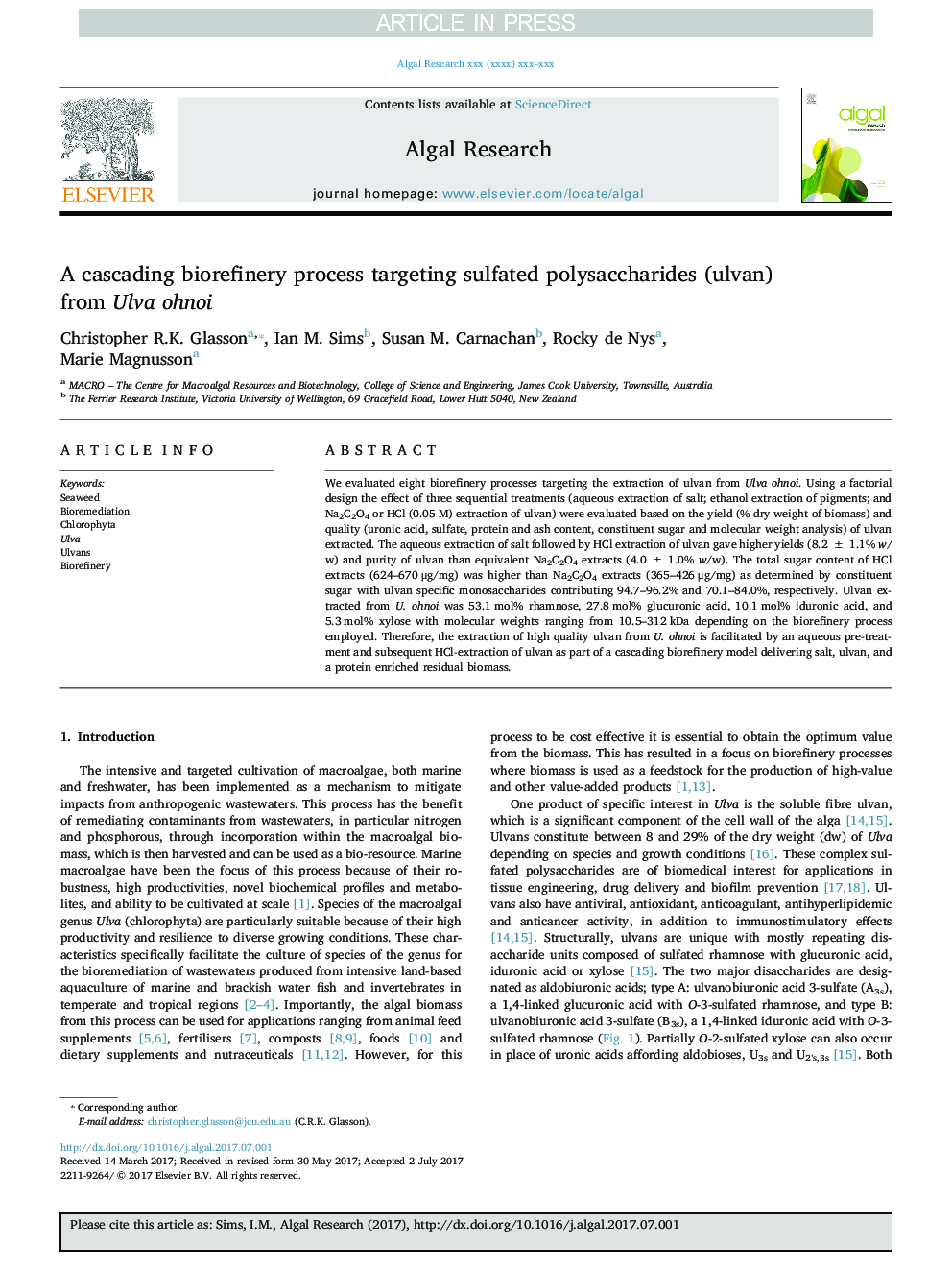| Article ID | Journal | Published Year | Pages | File Type |
|---|---|---|---|---|
| 5478566 | Algal Research | 2017 | 9 Pages |
Abstract
We evaluated eight biorefinery processes targeting the extraction of ulvan from Ulva ohnoi. Using a factorial design the effect of three sequential treatments (aqueous extraction of salt; ethanol extraction of pigments; and Na2C2O4 or HCl (0.05 M) extraction of ulvan) were evaluated based on the yield (% dry weight of biomass) and quality (uronic acid, sulfate, protein and ash content, constituent sugar and molecular weight analysis) of ulvan extracted. The aqueous extraction of salt followed by HCl extraction of ulvan gave higher yields (8.2 ± 1.1% w/w) and purity of ulvan than equivalent Na2C2O4 extracts (4.0 ± 1.0% w/w). The total sugar content of HCl extracts (624-670 μg/mg) was higher than Na2C2O4 extracts (365-426 μg/mg) as determined by constituent sugar with ulvan specific monosaccharides contributing 94.7-96.2% and 70.1-84.0%, respectively. Ulvan extracted from U. ohnoi was 53.1 mol% rhamnose, 27.8 mol% glucuronic acid, 10.1 mol% iduronic acid, and 5.3 mol% xylose with molecular weights ranging from 10.5-312 kDa depending on the biorefinery process employed. Therefore, the extraction of high quality ulvan from U. ohnoi is facilitated by an aqueous pre-treatment and subsequent HCl-extraction of ulvan as part of a cascading biorefinery model delivering salt, ulvan, and a protein enriched residual biomass.
Related Topics
Physical Sciences and Engineering
Energy
Renewable Energy, Sustainability and the Environment
Authors
Christopher R.K. Glasson, Ian M. Sims, Susan M. Carnachan, Rocky de Nys, Marie Magnusson,
